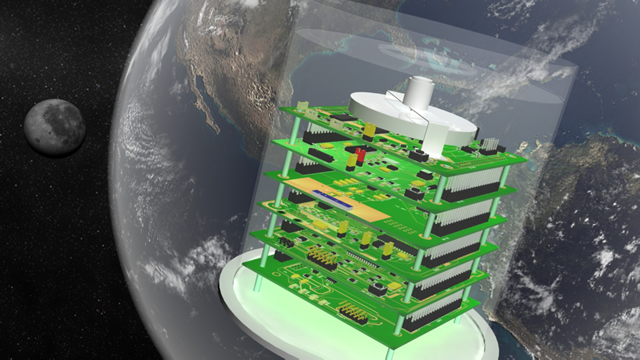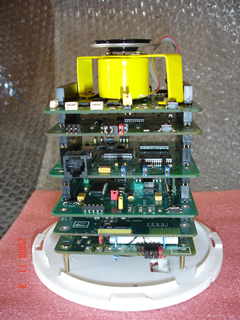S A T E D U
SATEDU is an Educational Satellite designed, manufactured and fully validated at the Institute of Engineering, from the National Autonomous University of Mexico (UNAM), to be used in school laboratories, classrooms, technological, Universities, Postgraduate Studies and Research Centers. |
|
SATEDU will train and attract new generations of students into the world of Science and Technology. It will also be used to develop and validate new satellite subsystems, as well as new technologies for real small satellites. The Educational Satellite has a size of CD's container, it includes all of the subsystems of a commercial satellite (small portable systems in this case) as well as microcontroller based subsystems. Among them are the followings: Structure, Power, Flight Computer, Wireless Communications, platform sensors, active stabilization both by inertial/reaction wheel and magnetic torque coils, and inertial navigation sensors. In addition, its operations are based in distributed software placed at each one of its subsystems, which performs high complexity tasks. In this regard, the Flight Computer contains the communications software between SATEDU and its PC Ground Station. The Ground Station PC contains specially designed software that generates 3D visualization image sequences to allow a virtual monitoring in real time from movements experienced by the Educational Satellite. This mode is very friendly to admit any person to understand in an interactive and simple way the operation principles from a satellite. SATEDU also includes two small wireless communications cards operating through USB ports. One of them is connected in tandem to SATEDU subsystems, while the second one is connected to the PC that behaves as the Ground Station. The two of them were specially designed and fabricated for SATEDU at UNAM. Every communications card contains the Texas Instruments RF chip CC2500 connected to a PIC microcontroller which executes programming sequences to operate the RF channel.
Particularly, the RF chip can be programmed to select 1 into 253 different communications channels. This mode can be employed to operate up to 253 SATEDU prototypes at the same place without experimenting communications interferences between each other. Note: This page looks better with Internet Explorer v7 or Firefox (any version) |
|





